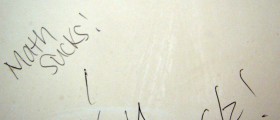Dyslexia is a learning disability that impairs person’s fluency or comprehension accuracy in reading and spelling ability. Dyslexia is quite an unusual disability and people affected by it are maybe just a little bit different than the others. They are not basically impaired and their abilities are not less superior to the abilities of others. It is rather that these people look at the world with their own eyes, and process the information just a little bit more differently than the others. Therefore, dyslexia often manifests doesn’t include any kind of neurological deficiency or problems with vision or hearing. Moreover, dyslexic people have normal IQ levels but reading and cognition develop independently in people who have dyslexia.
Signs and symptoms of dyslexia
The symptoms of dyslexia usually vary depending on the severity of the disorder. In most cases, symptoms begin before kindergarten and include delays in speech, slow learning of new words, low letter knowledge and letter reversal while writing. The symptoms are evident in the primary school when the child fails to learn the alphabet and order of the words. These kids may also have problems with associating sounds with the letters, identifying words, segmenting words into sounds, and learning to decode written words.
Dyslexia and writing
Dyslexic children may seem to be very messy at school. Their handwriting is usually poor, they spell words wrongly, lack of paragraphs and their papers are often full of crossed out words and incomplete sentences. However, these kids are not stupid or lazy; they are just suffering from difficulties that can make their writing a very hard task. Dyslexic people have very weak visual memory that may prevent a child from remembering how words look like. Therefore, spelling is a though challenge for these individuals.
The other great challenge for dyslexic people is sentence punctuation. Children with dyslexia have problems remembering to put upper case or capital letters at the start of the sentence and periods or full stops at the end.
Handwriting of dyslexic children is often poor and messy as they experience difficulty memorizing the sequences of movements that are required to write each letter. Their handwriting is uneven and they have problems in remembering which ways round certain letters go.
Writing problems of dyslexic people are also evident in sequencing ideas. Dyslexic children have problems in writing a story in the right order. They usually confuse the order of causal events and their consequences, since their mind fails to sketch out a rough outline of a written report.

















Your thoughts on this
Loading...